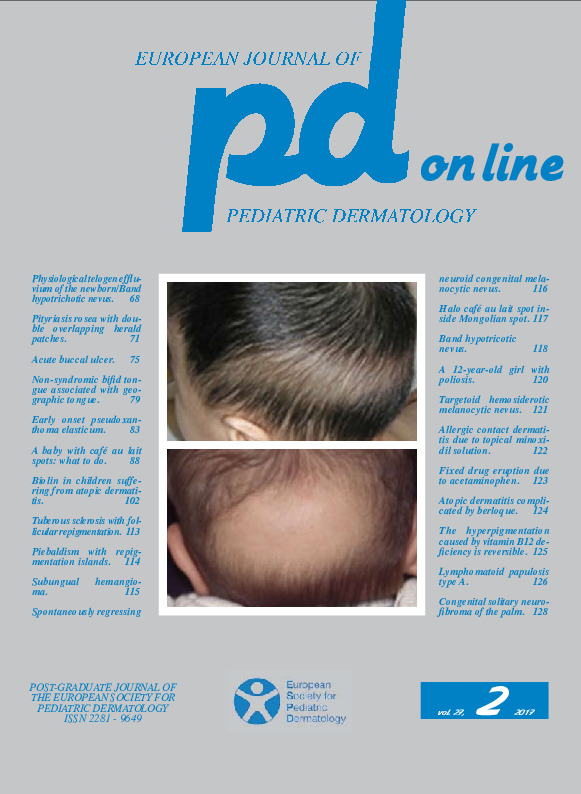Band hypotrichotic nevus.
Downloads
DOI:
https://doi.org/10.26326/2281-9649.27.2.1351How to Cite
Abstract
Alterations of the color and texture of the hair can be be due to various hereditary, nevic and acquired causes (1). The lesion we describe in this report due to its band distribution resembles the baby’s telogen effluvium.
However, the latter is physiological and transient, found in the first months of life on the median line and characterized by the absence of hair due to synchronous hair loss as is the case in fetal life (2). Due to its position in the occipital region in the past it was mistakenly attributed to the rubbing of the baby’s head on the pillow. The present lesion is moreover characterized by thinner and hypopigmented hair as occurs in the so-called congenital triangular alopecia, a condition that can also be highlighted after birth. In the latter condition the hair is thin enough to give the impression that we are dealing with alopecia and not with a hypotrichotic nevus as it is today accepted by all (4). The lesion we describe here, however, has a segmental, asymmetric band distribution. This type of distribution suggests a nevus condition due to skin mosaicism and is similar to another nevus condition, hair band heterochromia (1, 6, 7). In this condition the hair band of lighter color, for instance blond in a subject with dark hair, is thinner (7) or of the same thickness as the darkest ones (1). All the reports that talk about this affection so similar to the condition we here describe believe that the horizontal bands of lighter hair is the expression of a post-zygotic mutation: this would give rise to a keratinocyte clone that spreads along the Blaschko lines of the scalp (5).

